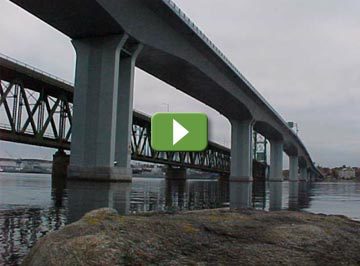January 3, 2014
Innovation of the Month: Design-Build
The January innovation of the month is design-build contracting, a project delivery method in which the design and construction phases of a project are combined into one contract that’s usually awarded on a low-bid or best-value basis.
 Webinar: Alternative Contracting Methods: Design-Build Contracting, Jerry Blanding, FHWA Resource Center
Webinar: Alternative Contracting Methods: Design-Build Contracting, Jerry Blanding, FHWA Resource Center
Typically, highway agencies choose the design-build approach to accelerate the completion of a project. It can save significant time over the more traditional design-bid-build approach in which the design and construction phases occur sequentially.
But design-build also has the potential to save money without sacrificing quality. Under this contracting method, agencies can assign certain project risks to the entity's agency or designer-builder best able to manage them. It allows contractors the flexibility to innovate in the selection of design, materials and construction methods. It also enhances environmental stewardship opportunities.
The webinar below provides an overview of design-build contracting, including the process, roles and responsibilities and keys to success. More tools and support are available on the Federal Highway Administration’s design-build Web page.
Collaboration Yields Smart Road Innovations
Dutch artist Daan Roosegaarde and infrastructure developer Heijmans have joined forces to develop interactive designs with potential to change the way roads look and operate. Among the “smart highway” innovations they’re pursuing are glow-in-the-dark road markings, interactive streetlights, battery-charging e-lanes and illuminated foul-weather warnings, according to an April 26, 2013, New York Times article.
Their first pilot project involves painting luminescent green road markings using paint developed by Roosegaarde on a 150-yard strip of road in Brabant, Holland. The markings are charged by sunlight during the day and remain visible for 10 hours after dark, illuminating the contours of the road. The idea is to save money by eliminating the need for street lighting and increase safety by improving visibility on roads that don’t have lights.
Another project involves applying dynamic paint to roads that becomes visible in response to temperature fluctuations, such as giant snowflakes that appear when the temperature falls below freezing to signal slippery conditions for drivers. “The goal is to make roads that are more sustainable and interactive by using interactive lights, smart energy and road signs that adapt to specific traffic situations,” according to a Studio Roosegaarde statement.


